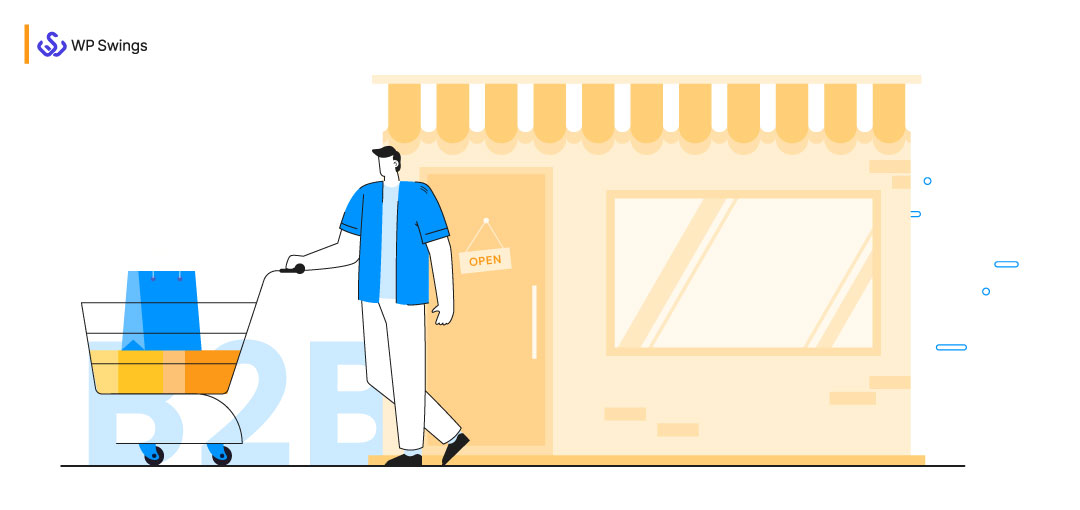
The eCommerce sector is witnessing incredible growth with every passing year. And, so the market trend followers, from small to medium businesses, all are seen shifting to various online platforms. Certainly, this transition is not limited to retail sellers and service providers. B2B eCommerce businesses are also very much in favor of following the trend too.
In 2023, an estimated 17 percent of B2B sales are expected to be generated digitally – Statista
To those who aren’t sure about the B2B market yet, we recommend you to first read about it in the next section followed by the information for which you’re here, i.e., “How can you set up a B2B online store with WooCommerce?”
What Is B2B eCommerce?
B2B or business-to-business eCommerce model refers to online business transactions between two business groups. Typically, this type of business model sustains when one business provides the materials to the other business for the production of the final goods.
For example, the business between the raw material supplier and the fashion boutique is a B2B eCommerce model.
Based on the parties involved, the B2B business model is further categorized into 4 types, namely,
- B2B2C
- Wholesale
- Manufacturers
- Distributors
I’m sure that you must be aware of each of these business types. However, if you’re still perplexed with the concept of the B2B eCommerce business model, the next section will clear all your confusion.
How Is B2B Business Different From A Regular eCommerce Store?
A regular eCommerce store setup is all focused on the customers – their buying behaviors and experiences. EVERYTHING. However, selling B2B is a more dedicated and personal experience than a typical eCommerce retail business.
It is easy to connect with the business buyers as they are more knowledgeable, aware of the bulk purchase negotiations, and look forward to getting great offers and discounts on bulk orders.
B2B business, hence, offers more variety of product pricing catalogs, payment methods, discounts, etc. depending upon the clients and their business size.
Taking into consideration all the possible variations, developing a B2B website or wholesale website requires a high degree of technical flexibility in shaping business activities like:
- Pricing for regular users and guest users
- Registration forms for different business types
- VAT or other forms of tax validations, support, and the exemption
- Multiple users support
- Wholesale order form and quote requests
- Custom billing/shipping
Developing an online store with such flexibility demands a platform that is robust and independent at the same time. And an eCommerce platform that suits all these requirements is WooCommerce.
You Can Use WordPress PDF Generator To Target Regular & Guest Users Separately!
WooCommerce is an open-source free eCommerce platform with strong abilities to develop custom stores. How?
Read further…
Why WooCommerce B2B Is The Best Choice?
WooCommerce has substantially shown its potential in the B2C market space, targeting every need of the eCommerce platform and its consumers. Similarly, WooCommerce has enormous potential to sustain the B2B eCommerce market as well.
However, the WooCommerce B2B eCommerce model is a whole different path to set up and manage, considering the different preferences and pressures that a B2B business faces. B2B buyers are more inclined towards direct interaction with sales representatives because of their bulk buying requirements.
Especially in larger corporations, B2B buyers have requirements that do not match the buying capacities of regular customers. Therefore, B2B eCommerce was often developed on “enterprise” variants of eCommerce solutions and so their building & maintenance costs resulted in hefty price tags.
All the buyers expect more convenience and customer-centered approach from B2B and B2C when buying within their businesses. And WooCommerce business-to-business concepts helped B2B sellers to take this double pressure of a fluid market and greater expectations as a challenge to up their game.
With WooCommerce B2B solutions, building a B2B eCommerce store became much easier. WooCommerce B2B concepts helped B2B marketers to imagine and realize their expectations to grow as B2C eCommerce.
With so much of their bottom line on the line, B2B e-commerce companies need to start evolving their businesses by reorganizing their websites to serve their business clients as consumers.
All-in-all the question remains the same, How WooCommerce B2B is the best solution?
Well, WooCommerce is robust, reliable, secure, and tested over the years. It has the capability of managing thousands of products and their variants. The category and tags hierarchies, which is another strong feature of WooCommerce, permit the sellers to build custom catalogs. The support is widely available in the form of various agencies and service providers.
Looking For WooCommerce B2B Solutions?
Pros And Cons Of WooCommerce B2B Stores
There are many conflicts that WooCommerce isn’t a B2B solution. Well, that’s true!
Primarily, WooCommerce was developed keeping the B2C eCommerce approach in view. However, the flexibility of WordPress and WooCommerce renders a great opportunity for B2B eCommerce setups as well.
Pros Of Developing WooCommerce B2B Stores
- WooCommerce is highly popular and accounts for a huge tested ecosystem and expert support
- The WooCommerce addons extend its functionality and make it fully featured to develop any eCommerce business
- WooCommerce offers a wholesale-friendly layout of the products for its customers
- With WooCommerce, plenty of off-shelf topics and hacks make it possible to increase the conversion rates exponentially.
- WooCommerce has a vast Addon gallery to choose from with a pool of both paid and free plugins
- WooCommerce pricing structure is suitable for wholesale stores of all shapes and sizes.
Cons Of Developing WooCommerce B2B Stores
- The WooCommerce plugins are often seen as a benefit. However, a wrong source of the plugin may induce your eCommerce store to have security vulnerabilities.
- Since WooCommerce is an independent platform, scaling the business traffic (especially when it grows) involves hosting tweaks and development efforts, else the speed and conversion are often compromised.
Everything aside, we all know that each eCommerce platform has its own set of pros and cons. What matters the most here is your requirements. WooCommerce B2B, however, offers better flexibility in-store setup and managerial aids than any other platform.
It’s Time To Build WooCommerce B2B Stores!
Setting up a WooCommerce B2B store has two major approaches. One is more inclined towards the professional developers, i.e., by adding code snippets to achieve the various functionalities. The second approach is more conventional and suggests the use of plugins to achieve the desired results.
Since not every B2B eCommerce store owner may necessarily be a great programmer, we shall start our WooCommerce B2B setup process with approach 2 – using plugins.
Setup B2B eCommerce With WooCommerce B2B Plugin!
WooCommerce understands its customers’ requirements and makes every possible effort to provide them with great services. Hence, in order to help its customers build B2B stores with more ease, it came up with B2B solution for WooCommerce.
B2B for WooCommerce is a comprehensive integration of 5 different best-selling plugins along with more mature B2B features to support you build your WooCommerce B2B store ASAP!
Once you’ve successfully installed this plugin, you may proceed to set up your WooCommerce store following the steps below.
1. Register Your Customers
This is the first and very basic step. With this plugin, you have the option to customize your default registration form specifically for your B2B customers. Add fields, radio buttons, checkboxes, etc. to draft the registration form that collects some additional information for you. Try to keep your form design clean and precise by showing fields only when needed.
2. Define User Roles For Customers
Although you’re setting up your B2B store, there are many sellers who aim to target both B2B & B2C customers at the same time. If you plan to do so, you need to define the user roles for your customers. Defining user roles will help you classify each customer individually and will also give you more flexibility in ways to represent your products in front of customers.
To set up user roles for your B2B buyers –
- Go to WooCommerce > Settings > Members Only > User Roles.
- Select the ‘Customer’ user role from the ‘User Roles’ option.
- Enter a name for your new role, for example, ‘B2B Buyer’.
- Click ‘Duplicate role’.
Note: To create other user roles, follow the same steps.
3. Enable B2B User Approvals
After the user roles are set and done, you may assign the “Need Approval” criteria in case multiple user roles exist. For example, if you have defined two user roles – B2B and B2C buyers, then you can add the user role field in your registration form. With this field, you can allow the user to choose his own user role for your business. To avoid creating excess user roles, you may add approval permissions. The user roles will only be active when they’re approved by the seller or the admin.
To add the user role options –
- Go to WooCommerce > Settings > Members Only > Registration.
- Select the checkbox next to the ‘Enable Roles Field’ option.
- With the ‘Registration Roles’ option, choose which roles to include in the role selection field by checking the role in the ‘Include’ column.
To add the approval permissions –
- Go to WooCommerce > Settings > Members Only > Registration.
- Tick the checkbox next to the ‘Enable User Approval’ option.
4. Configure Pricing Rules
This feature is specifically beneficial with multiple user roles. Just imagine a situation where you don’t need to specify to each user about the product and pricing. WooCommerce B2B plugin has this great feature through which you can define different pricing rules for buyers from different user roles. You may also set the minimum and maximum purchase limits based on different user roles. However, the WooCommerce B2B plugin offers 5 variants for customizing the pricing rules for your B2B and B2C customers –
- Set a fixed price
- Percentage increase
- Percentage decrease
- Fixed increase
- Fixed decrease
Source: B2B for WooCommerce
5. Product Visibility Rules For WooCommerce B2B Customers
WooCommerce relates to the B2B requirements well and understands that you won’t wish to reveal the products and pricing to every user coming to your store. B2B’s eCommerce business model is highly flexible towards the users’ demands. Hence, the WooCommerce B2B plugin helps you in selecting the visibility of your products completely based on the user roles defined earlier. You may also choose to show/hide specific products for specific user roles.
Source: B2B for WooCommerce
Also Know: Similar to products and prices, this plugin supports adding restrictions to shipping and payments as well based upon user roles. And the B2B seller can also enable the feature to “Request a Quote” and “Hide Prices”. Along with that WooCommerce B2B purchase order and tax exemption features also contain equal emphasis within this plugin’s detailed features list.
Well, that was all with the B2B for WooCommerce plugin.
However, we left out the first option earlier to discuss setting up the store with the plugin. It’s time that we shall proceed back to it and see setting up the store from a developer’s perspective.
Setup WooCommerce B2B Stores From A Developer’s Perspective
Another powerful solution that motivates developers to set up an online wholesale store efficiently is by adding the B2B source codes. We’ve covered some most searched WooCommerce business-to-business shortcodes in this section.
1. Customize Registration Form
Many businesses often prefer user-specific registration forms. So to customize it, you can add custom fields in the default registration form.
For example, if you wish to add a “Company Name” field in your form, you may follow the following shortcode –
add_action( 'woocommerce_register_form', 'custom_registration_field' );
function custom_registration_field(){
echo '<label>' . esc_html__( 'Company name', 'your-custom-text-domain' ) . '</label>';
echo '<input type="text" name="billing_company">';
}
To sync this field with WooCommerce billing –
- Save the company name as user meta using the same fields that WooCommerce uses (billing_first_name, billing_company, etc)
- Use woocommerce_created_customer hook
add_action( 'woocommerce_created_customer', 'save_custom_registration_fields' );
function save_custom_registration_fields( $user_id ) {
$field_value = sanitize_text_field( filter_input( INPUT_POST, 'billing_company' ) );
if ( $field_value !== NULL ){
update_user_meta( $user_id, 'billing_company', $field_value );
}
}
2. Hide Prices From Guest Users
It’s inconvenient for the Wholesale sellers to reveal their product prices because the prices often differ based on the buyer. Hence, it is evident that the need to hide prices for guest users is genuine. You can do so manually with 2 WooCommerce filters available.
Firstly, we’ll see how the woocommerce_get_price_html filter works in hiding the prices from the guest users.
add_filter( 'woocommerce_get_price_html', 'hide_prices_guest_users', 10, 2 );
function hide_prices_guest_users( $price, $product ){
if ( ! is_user_logged_in() ){
return esc_html__( 'Login to view prices', 'your-plugin-text-domain' );
} else {
return $price;
}
}
Implementing the above code will hide your price and replace it with the text, “Log in to view prices”. However, the guest user can still see the price of your product with this filter by adding the product to the cart.
To overcome this situation, a second WooCommerce filter came into view, i.e., woocommerce_is_purchasable filter.
add_filter( 'woocommerce_is_purchasable', 'disable_purchasable_guest_users' );
function disable_purchasable_guest_users( $purchasable ){
if ( ! is_user_logged_in() ){
return false;
} else {
return $purchasable;
}
}
Implementing the above code will however hide the “add to cart” option for the guest users. Hence the pricing will only be visible to the logged-in users now.
Note: There may occur some complications in implementing these code snippets if you’re using AJAX search forms. Therefore you must check for AJAX before implementing these.
3. Tax Handling For Different User Roles
Online store sellers often mention whether the tax is included or excluded along with the product prices. With different user roles, it gets a little complicated to define tax with the prices.
For example, B2B sellers wish to mention the product prices with the suffix “excluding tax” while B2C sellers mention “including tax”. You can do so easily using one simple WooCommerce function, set_is_vat_exempt() as mentioned below.
add_action( 'init', 'tax_exemption' );
function tax_exemption(){
// first we check if the user is tax exempt
$tax_exempt = get_user_meta( get_current_user_id(), 'is_tax_exempt', true );
if ( $tax_exempt === 'exempt' ){
$customer = WC()->customer;
$customer->set_is_vat_exempt( true );
} else {
// the next line is only necessary if the user’s exempt status changes dynamically, such as based on billing country
$customer->set_is_vat_exempt( false );
}
}
Are You Ready To Set Up WooCommerce B2B Stores?
B2B eCommerce stores are growing over the eCommerce industry at a quite faster pace in recent years. And it is time now for you to take a leap of faith and shift your wholesale store online with the WooCommerce platform.
The right way is a must to choose while you plan to set up a WooCommerce B2B store. You may go with creating codes or simply add the plugin. The choice is yours!


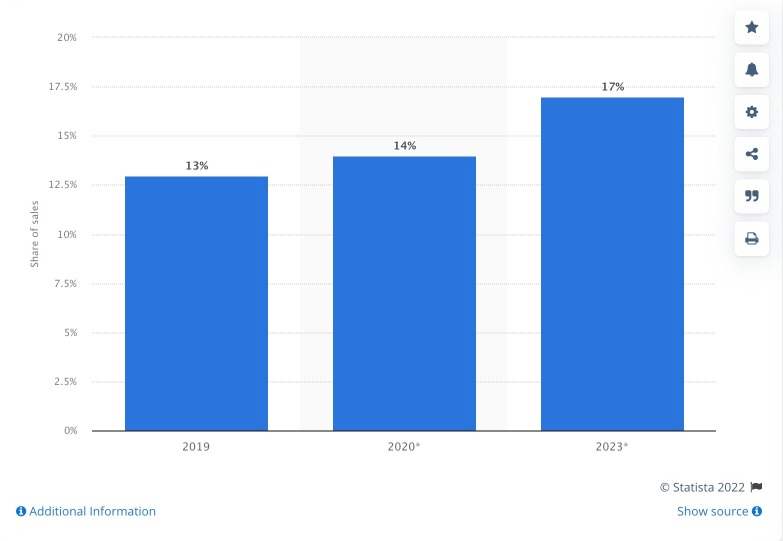
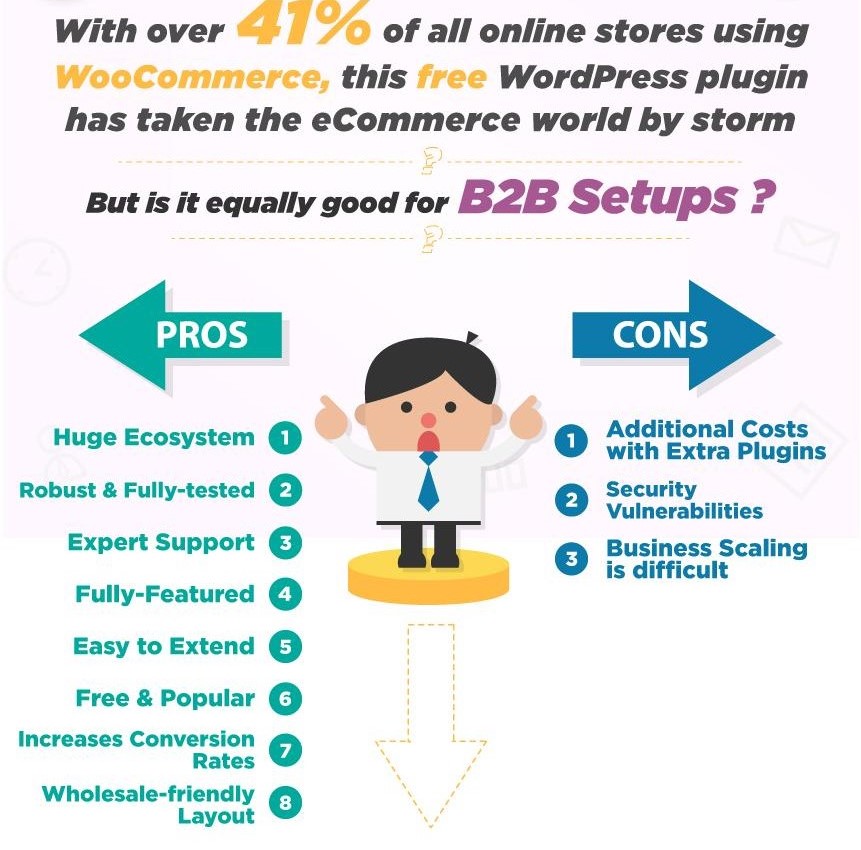
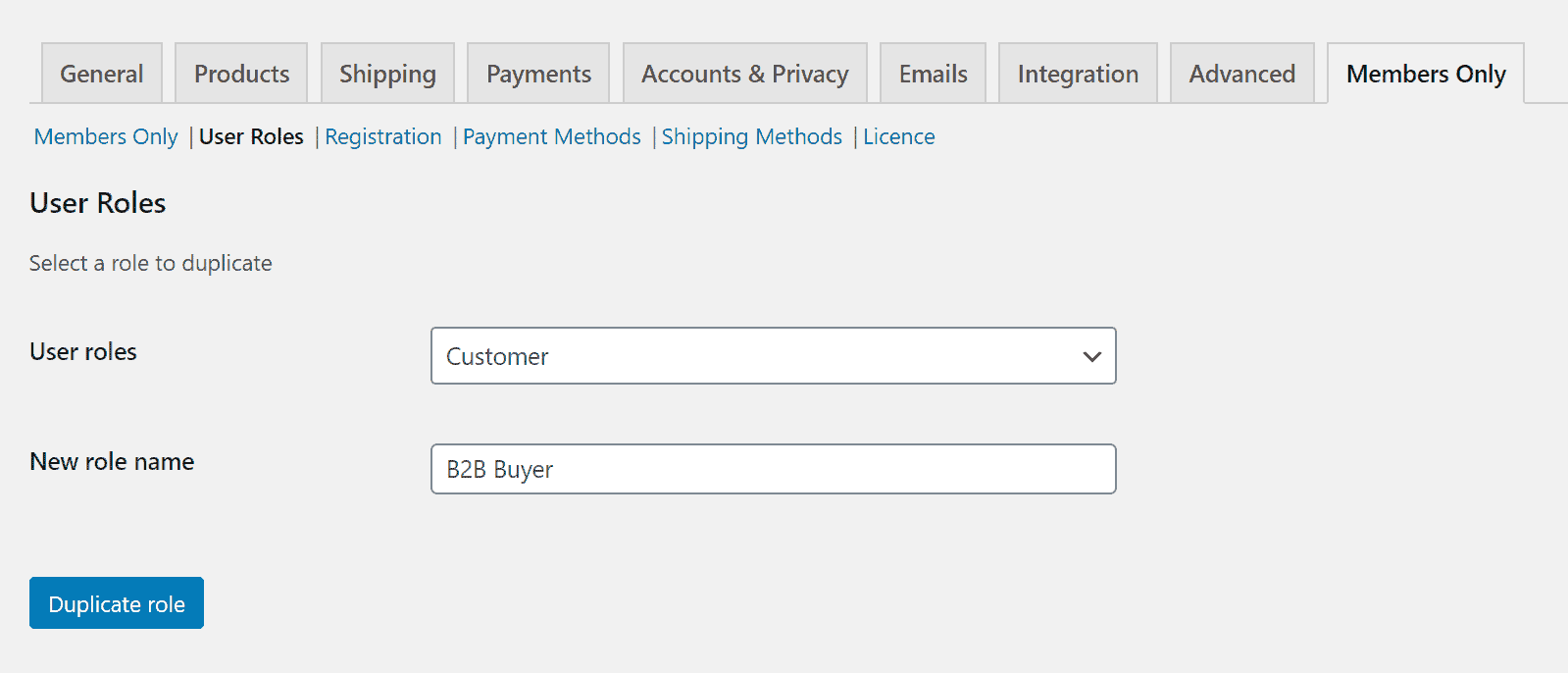
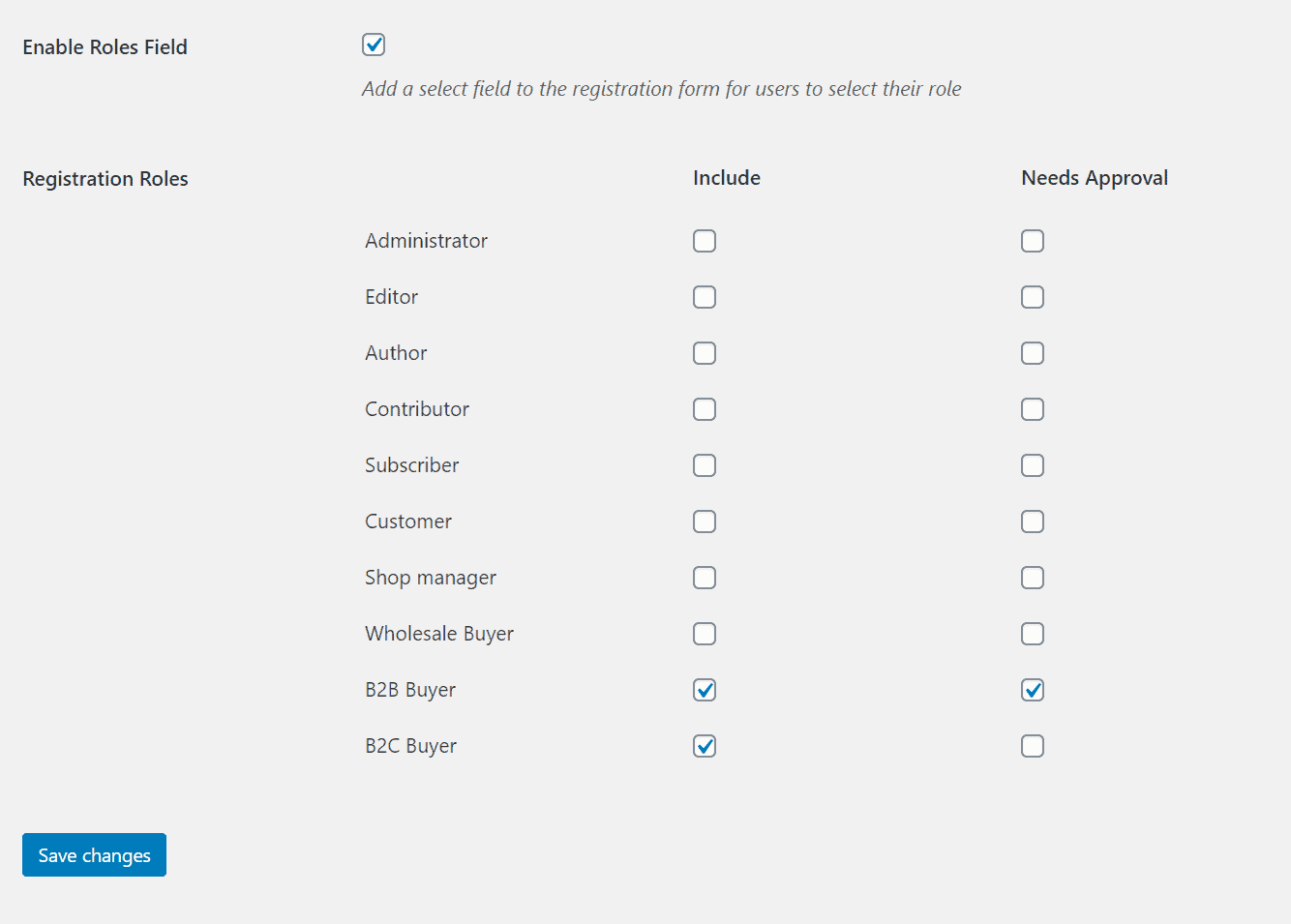
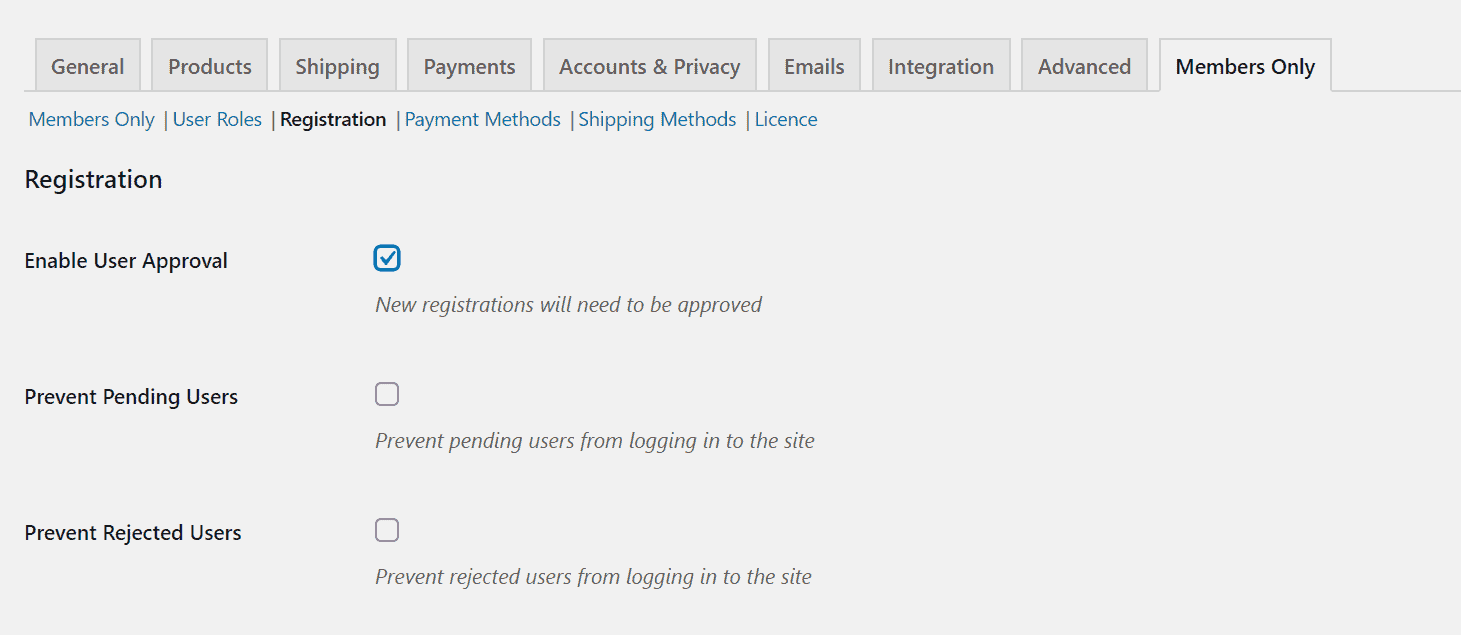
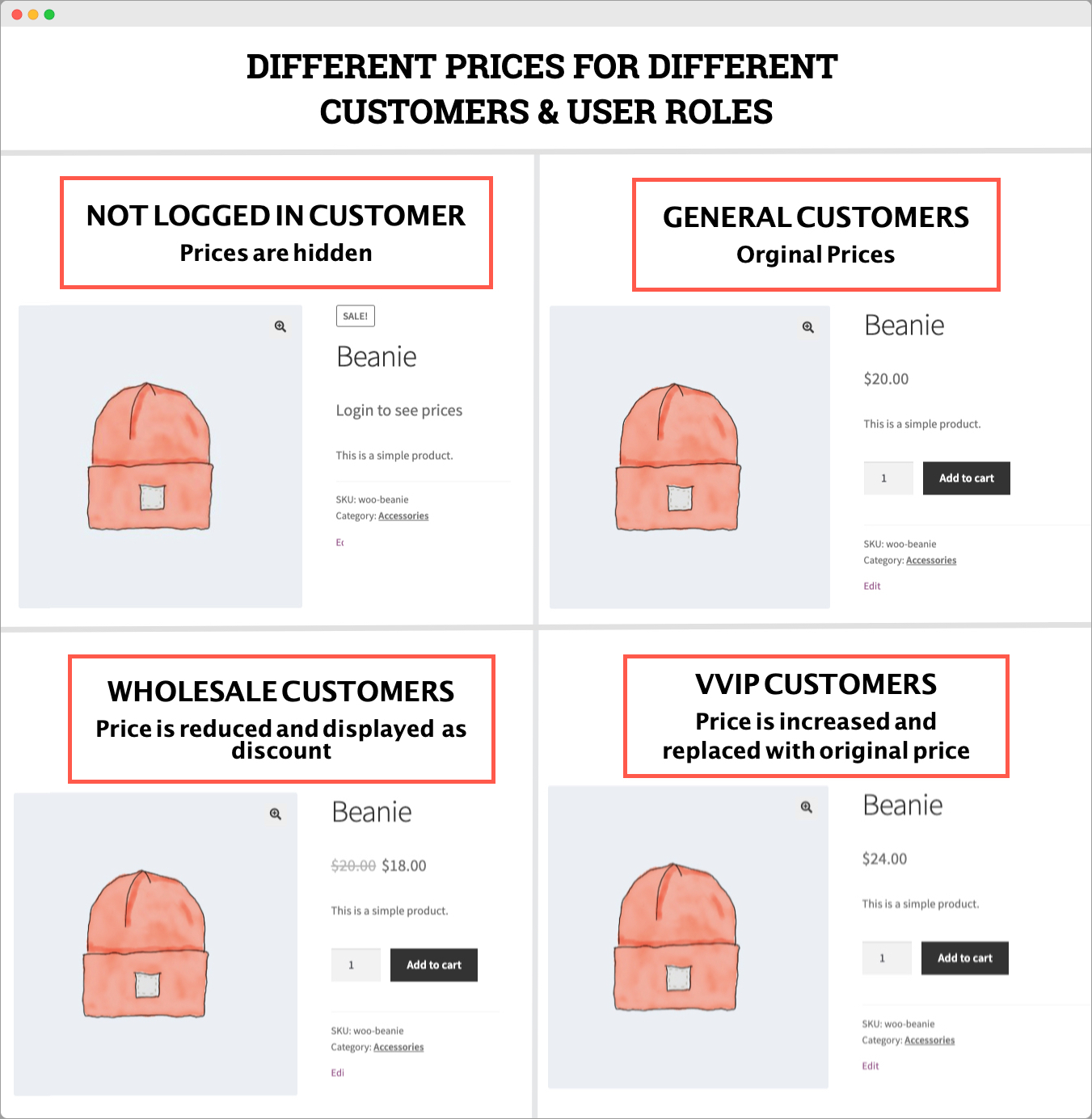
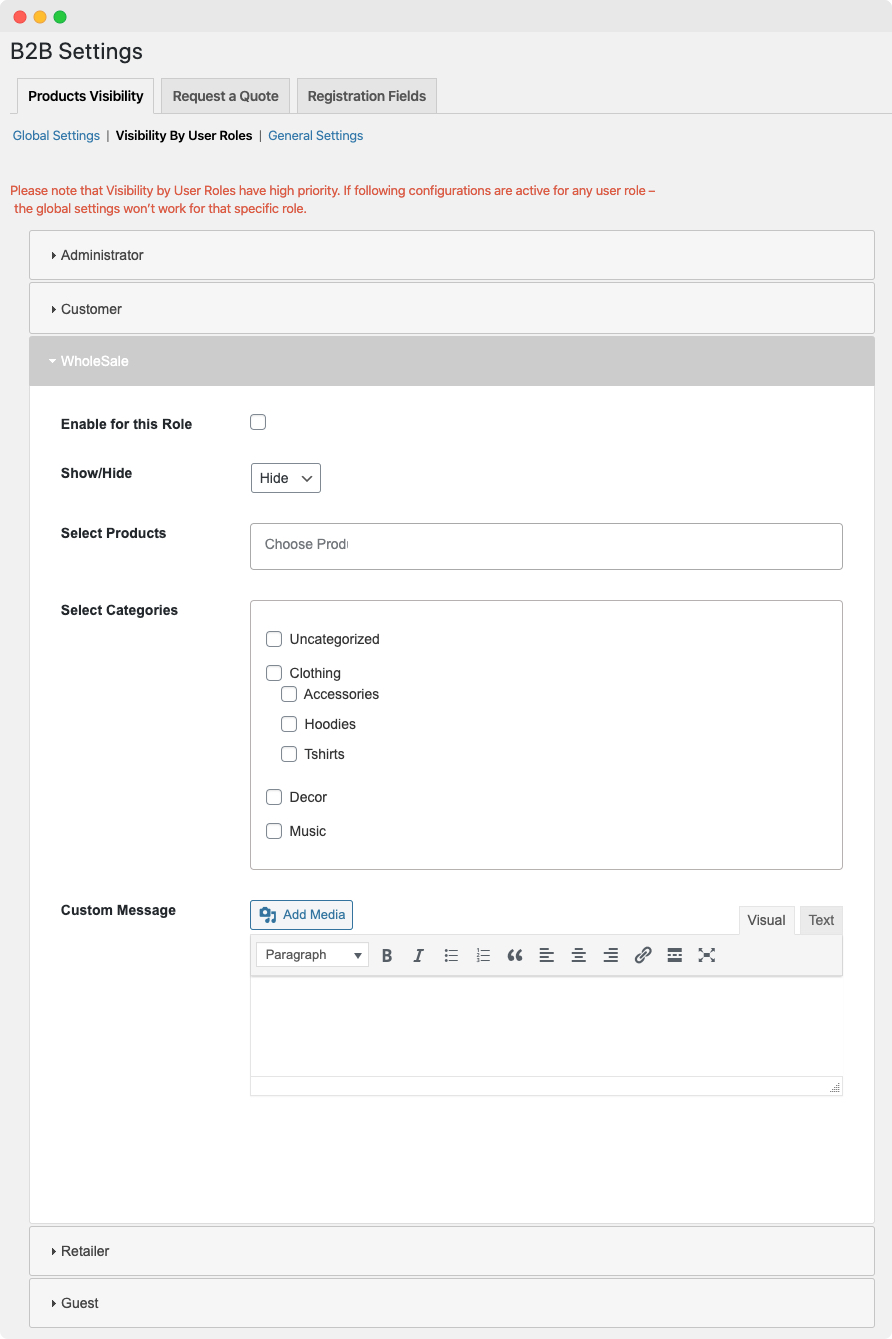
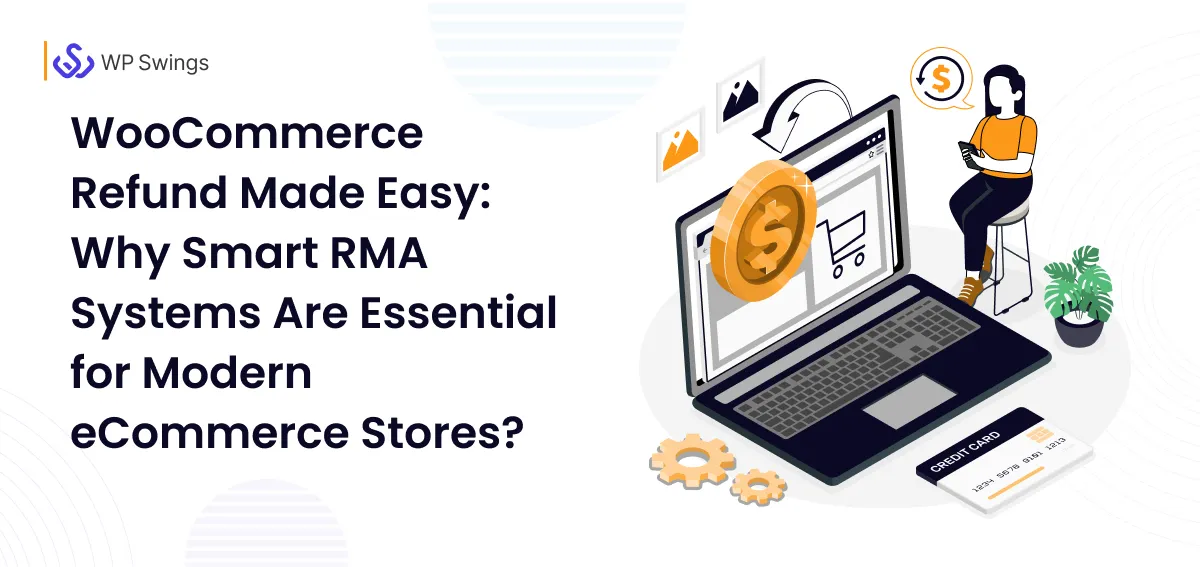
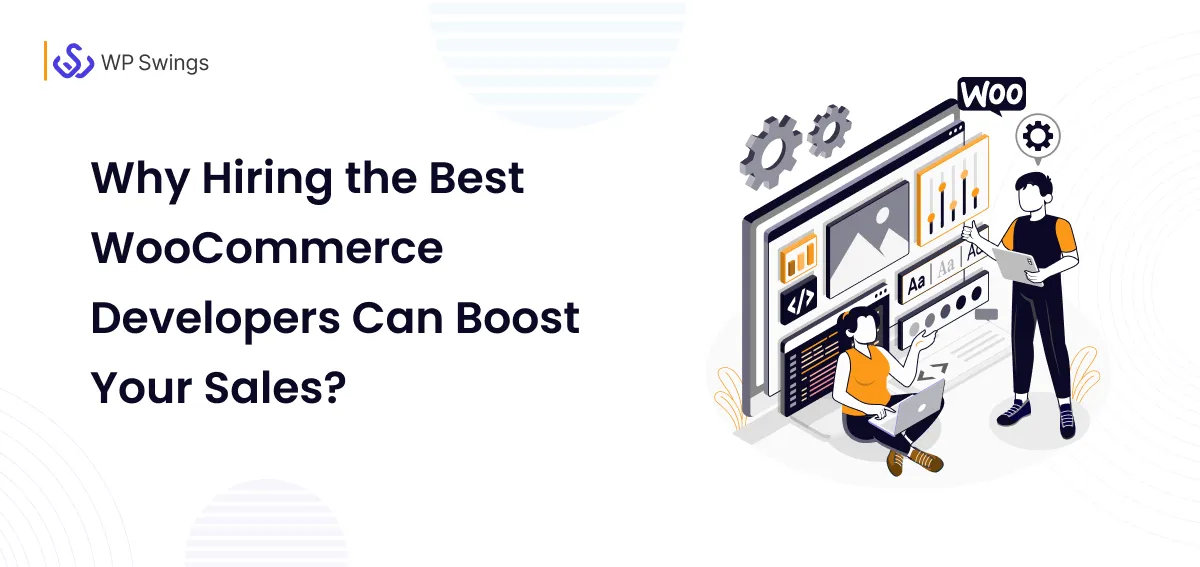
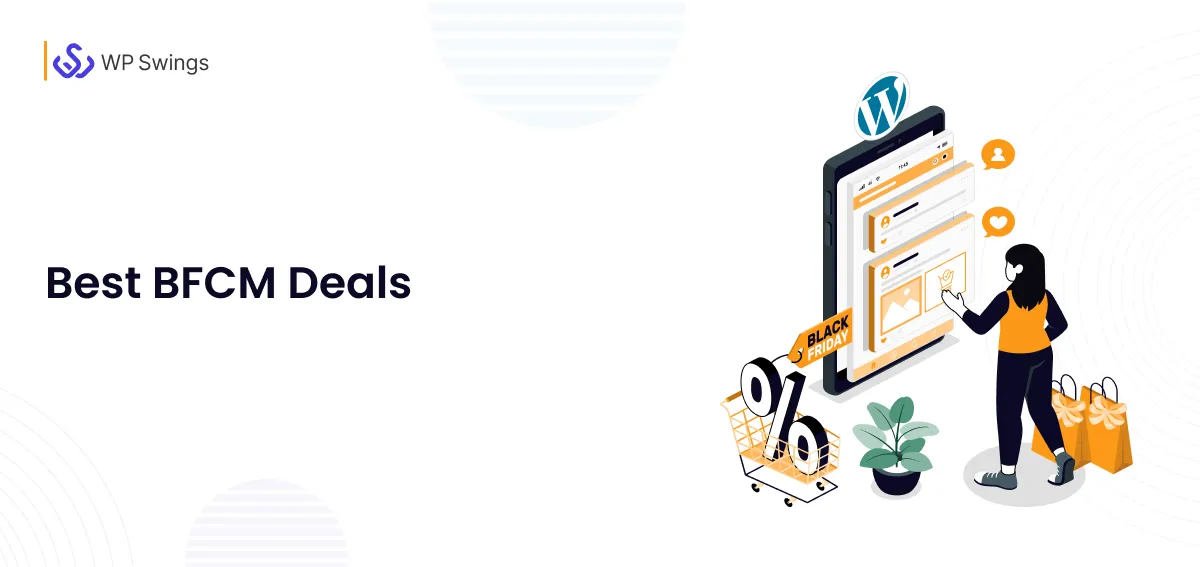
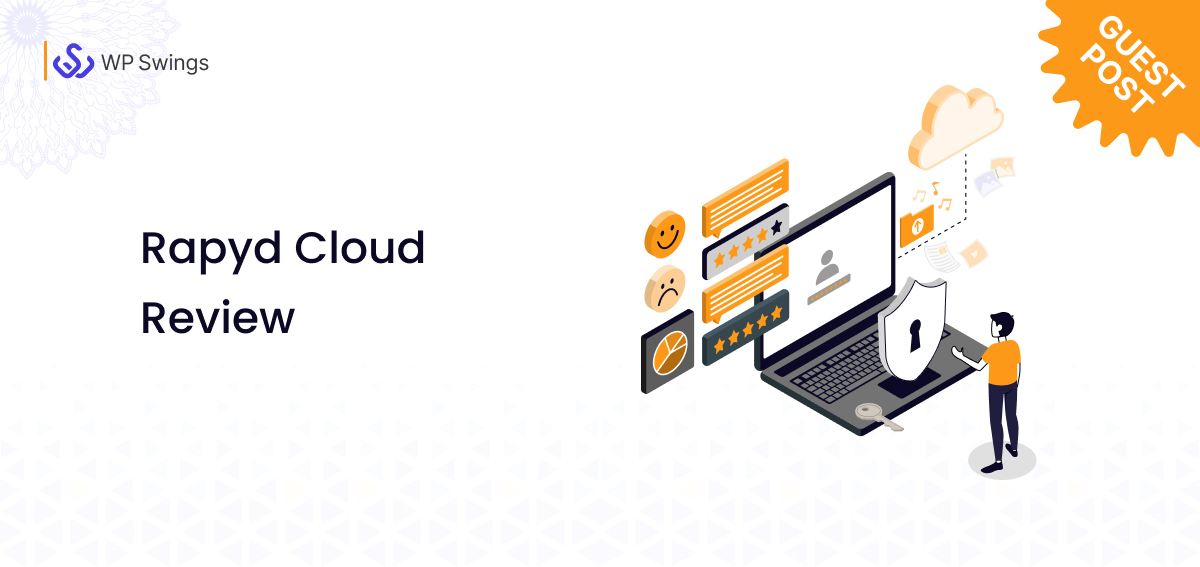



Thanks for taking the time to write this extensive post. I wonder if your research got you much deeper into the user management aspects of B2B. My startup needs to connect external IDs from an IdP to an online store. I’m trying to determine whether and how Woocommerce/Wordpress can accommodate multiple users from a business when the identities are not stored within WordPress. Any insights or links you could refer?
Hello Ted
I’m glad you liked the blog as it definitely took me a lot of research and learning while creating content.
In respect to your query, I assume that you wish to know if you can show accommodated users in WP or not in case their data is not stored in WP.
Well, you can definitely do that. You just need to make sure that your data is stored on some server, not necessarily on WP. And you can fetch it through APIs. Also, make sure that wherever you store your data online, be it Google Docs or any specific server, they should also provide the API for you to fetch the data. Then you need to call the API and then parse the data and list it over your WordPress/WooCommerce store.
Let me give you an example here, suppose you want to list multiple movies on your WP website, then you can look for the server API that includes all the movies like – https://www.omdbapi.com/ After you log in to the server and generate the API key, you can pick those movies using that API, parse and list the movies on your WP website.
Hope it helped you.